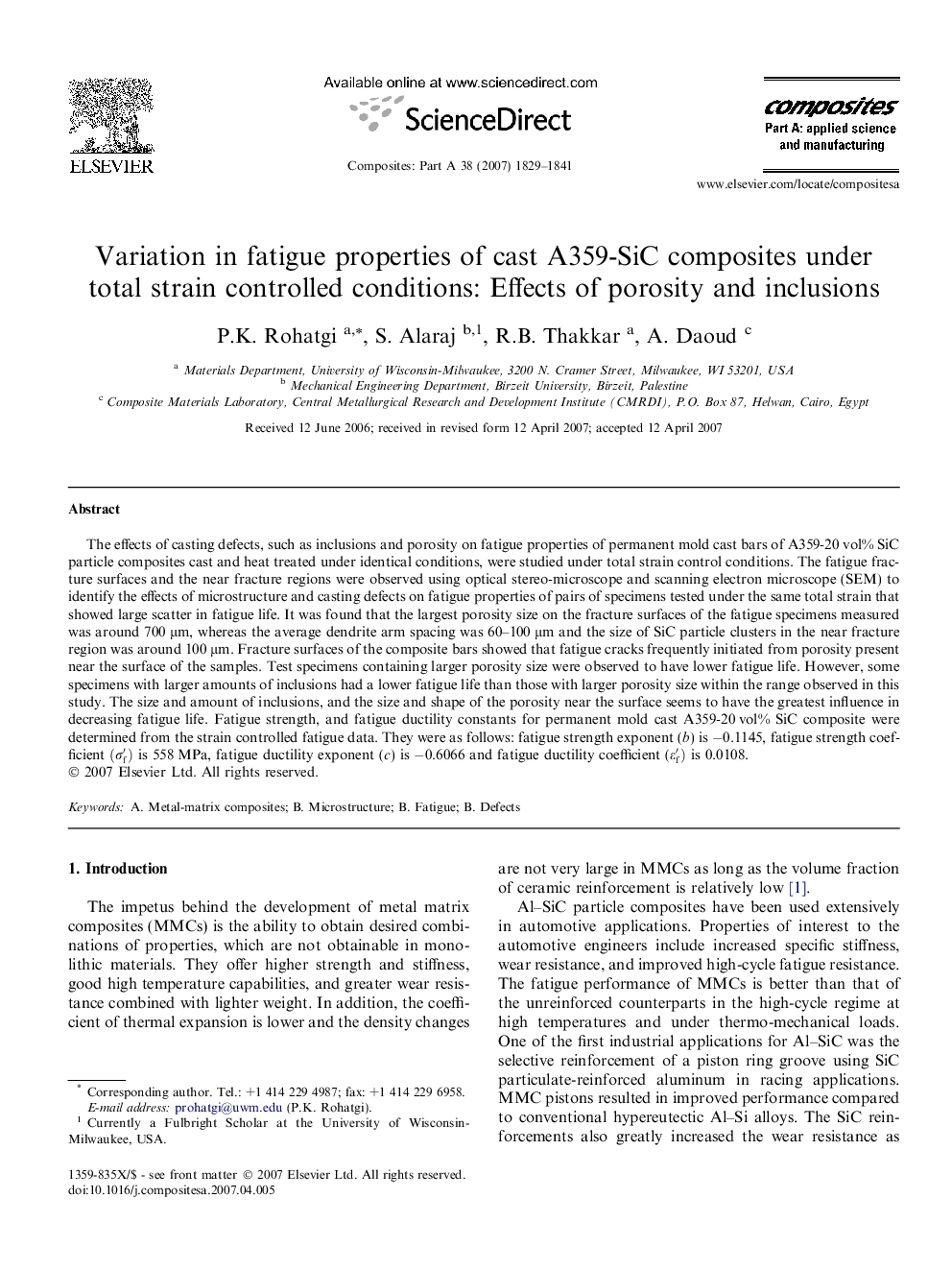| Article ID | Journal | Published Year | Pages | File Type |
|---|---|---|---|---|
| 1467509 | Composites Part A: Applied Science and Manufacturing | 2007 | 13 Pages |
The effects of casting defects, such as inclusions and porosity on fatigue properties of permanent mold cast bars of A359-20 vol% SiC particle composites cast and heat treated under identical conditions, were studied under total strain control conditions. The fatigue fracture surfaces and the near fracture regions were observed using optical stereo-microscope and scanning electron microscope (SEM) to identify the effects of microstructure and casting defects on fatigue properties of pairs of specimens tested under the same total strain that showed large scatter in fatigue life. It was found that the largest porosity size on the fracture surfaces of the fatigue specimens measured was around 700 μm, whereas the average dendrite arm spacing was 60–100 μm and the size of SiC particle clusters in the near fracture region was around 100 μm. Fracture surfaces of the composite bars showed that fatigue cracks frequently initiated from porosity present near the surface of the samples. Test specimens containing larger porosity size were observed to have lower fatigue life. However, some specimens with larger amounts of inclusions had a lower fatigue life than those with larger porosity size within the range observed in this study. The size and amount of inclusions, and the size and shape of the porosity near the surface seems to have the greatest influence in decreasing fatigue life. Fatigue strength, and fatigue ductility constants for permanent mold cast A359-20 vol% SiC composite were determined from the strain controlled fatigue data. They were as follows: fatigue strength exponent (b ) is −0.1145, fatigue strength coefficient (σf′) is 558 MPa, fatigue ductility exponent (c ) is −0.6066 and fatigue ductility coefficient (εf′) is 0.0108.
